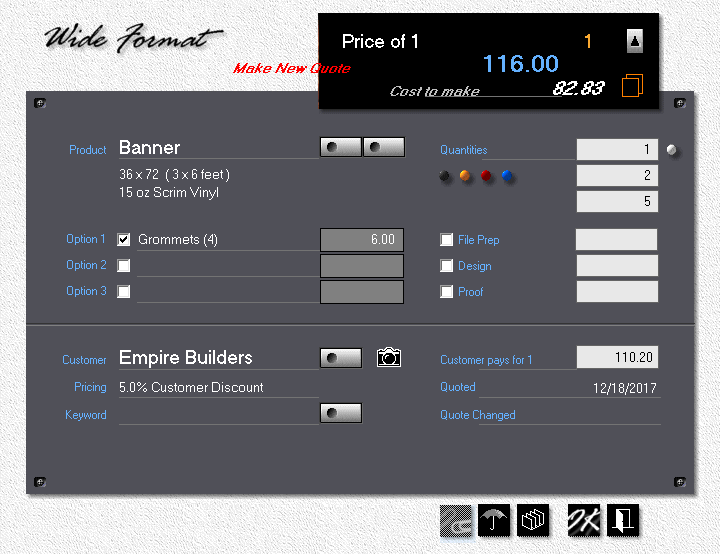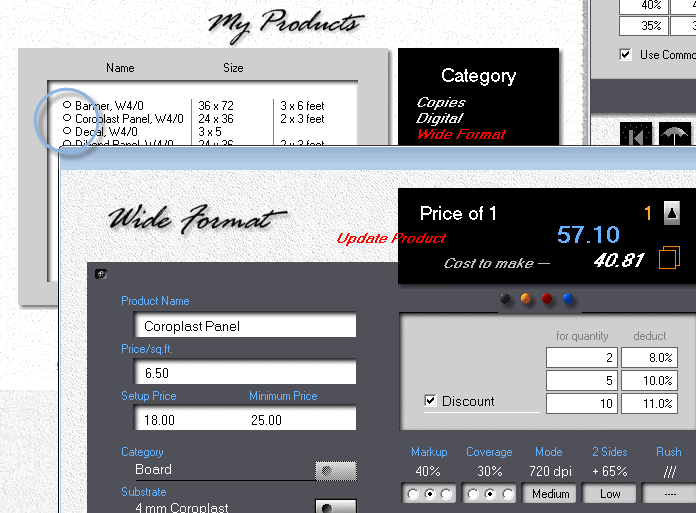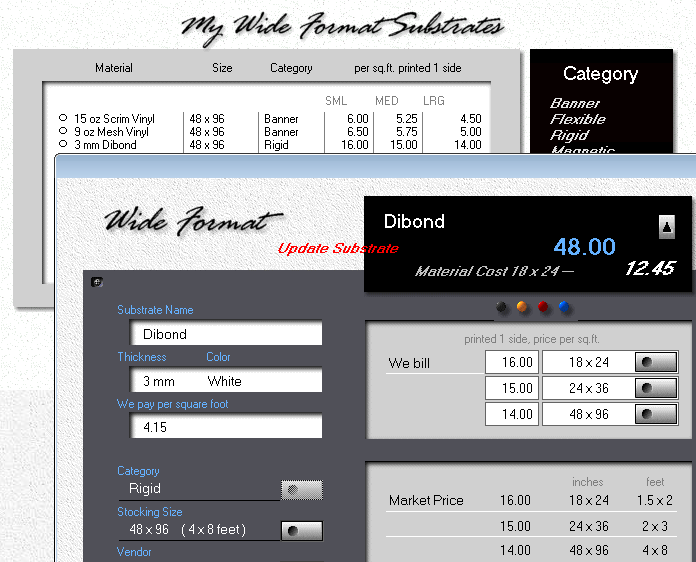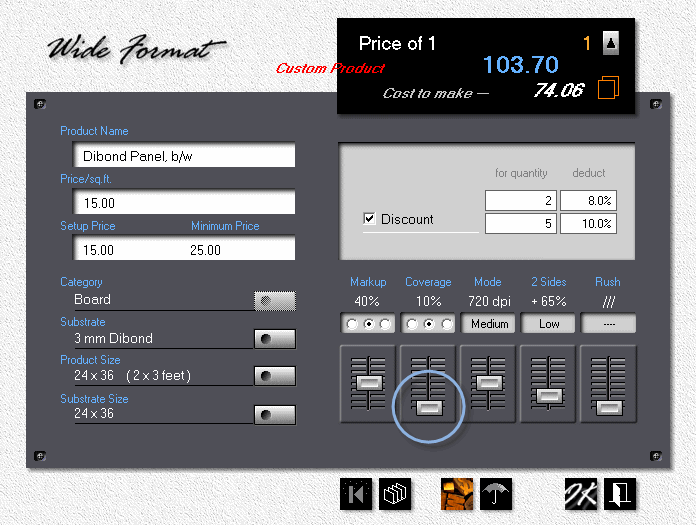The Big Picture
Wide Format - in a Nutshell

The marketing strategy we adopted for Morning Flight is what the wide format community seems to be doing almost universally: Sell wide format by the square foot. Advances in inks and substrates are too rapid, and the technology itself too volatile for prices to be tied to a specific press or ink formulation.
Most consumers will treat wide format, and to some degree all digital products, as a commodity rather than a service. They're sold as customized shelf items and priced as such. Few buyers would connect a banner or a vehicle wrap to a printing press. Environmental concerns aside, when a customer visits your website or walks into your store, he or she is unlikely to ask what type of ink you'll be using. They'll want to know how much attention their sign will attract, how well their banner will stand up to the weather. And, of course, the price.
Always the price. Starting with Morning Flight V17.1, you'll have a window into what other printers say they're charging for digital and wide format. Those figures didn't come out of thin air. They're an amalgam of published guides and surveys (such as the highly regarded NPRC signs and wide format pricing study), and the pricing some of our more than 6,500 users have shared with us.

What we've learned from the NPRC Pricing Studies ...
•Banners account for a third of all wide format sales, with an average retail price of $110.00 for a 3x6 foot banner.
•Most printers in the U.S. automatically offer a 5% discount on digital and wide format to repeat customers.
•While the variation in price for identical digital products is rarely more than 5% between different regions of the country, it often climbs to a much higher percentage within the regions themselves. In other words, the greatest variations are found not between Long Beach and Brooklyn, but within the two.
Putting it all together ...

The Product
Every wide format quote and order starts with a product. The program comes preloaded with at least one product in each category. Treat those products as templates. They're mandatory and can't be deleted, but you can edit nearly anything you like, including cost and price. My advice is, don't alter templates. When you do you'll lose their usefulness as a market price guide. How do you recognize a template? By the small circle in front of it.
Use a built-in product:
1.As is, as just another product in a quote or job ticket
2.As a starting point for building a custom product in a quote or job ticket
3.As a starting point for making your own templates, to cut down on having to customize.
Different sizes for the same product come to mind.

![]()
Unless you need price variations of the same product (retail vs. wholesale, different quality levels), try to maintain as much uniformity in the pricing of your own products as you do of the products that came in the box. Adjusting your price in a quote is much easier when you can count on consistency.

The Substrate
In wide format, substrates set the price. Not because their cost contributes the lion's share of a product's price (which it rarely does), but for a reason much simpler: Banners aren't printed on aluminum, and yard signs aren't printed on scrim vinyl. In wide format printing, the substrate is the center of the universe because it first controls the type of product we can make from it, then dictates the type of press we have to run it on.
About the only thing substrates don't control is whether a sign or banner or vehicle wrap is printed in black or in full color. Fortunately, that doesn't seem to matter. Should it ever become a factor, offer the same product in two separate versions: One priced for black, one for color. Creating two different prices can be as simple adjusting the ink coverage.
But making two versions should rarely be necessary. Check the web, and you'd be hard pressed to find a shop that charges extra for color. Disregarding size and substrate and whether printed on both sides, a banner is a banner. None of this was ever part of a greater scheme of things. I think it all just fell into place.

See also
